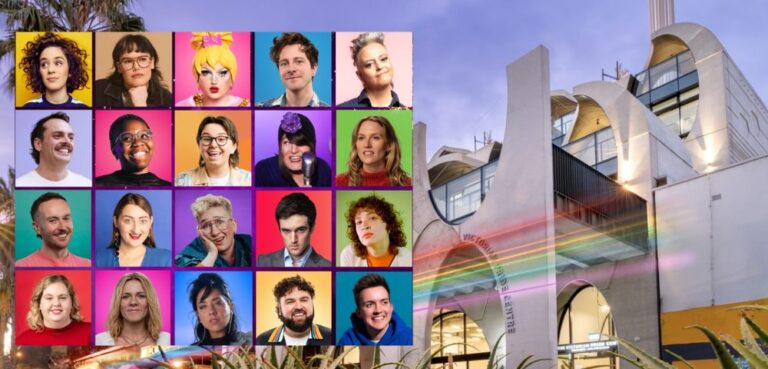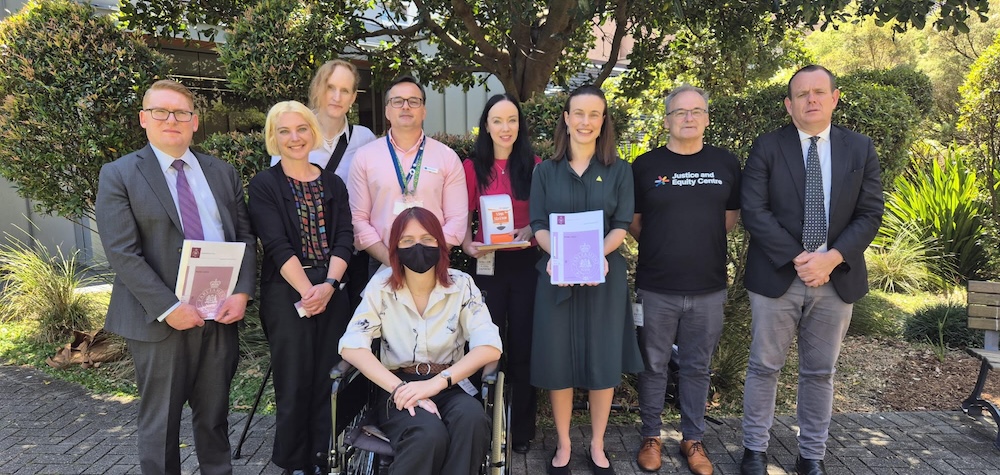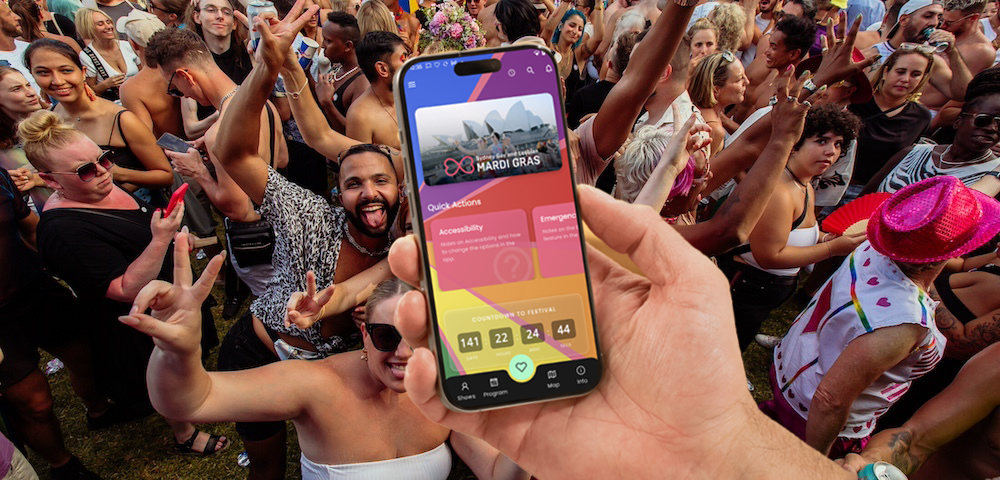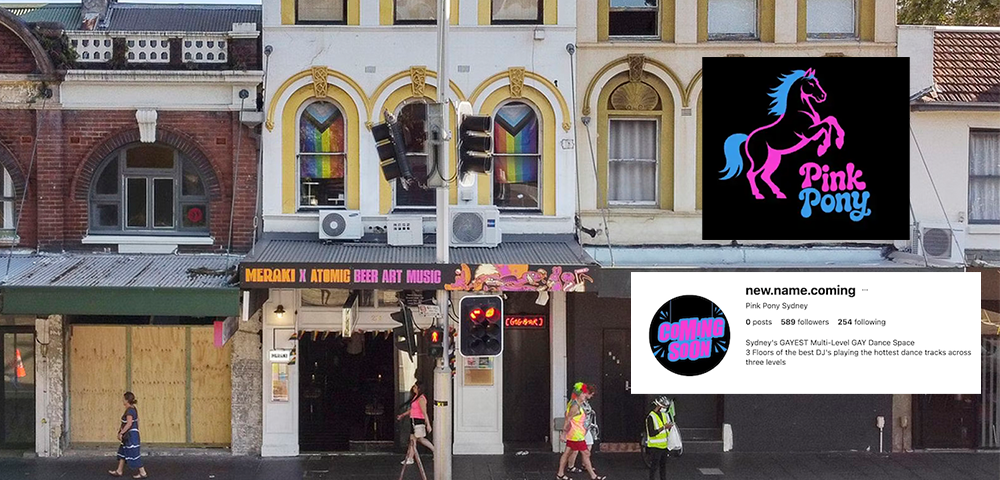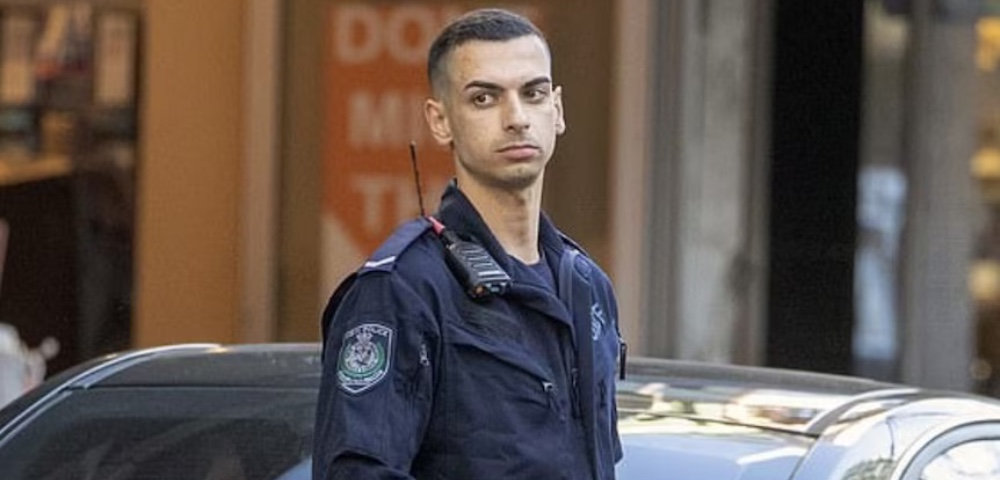
Homophobia: a love story
Last week The Daily Telegraph exposed the Sydney Gay and Lesbian Mardi Gras for allegedly ripping off the taxpayers of NSW. The fact that the parade will be exempt from the user-pay system (and that other organisations/charities are not) sparked a plethora of anti-gay rants on talkback radio. A colleague noted that far from adding to Mardi Gras’ list of recent woes, this was probably the best thing that could have happened to them. I agreed.
There’s nothing like a fresh burst of homophobia to arouse pro-gay sentiment, renew loyalties and rally the community dollar. We’ll happily bitch, criticise and ignore our organisations out of existence with a hearty chorus of I’m over it, but let some nasty heterosexuals take a swipe and an innate lavender defensiveness takes over.
As horrendous as it may sound, it’s tempting to say we need a bit of homophobia to make things happen. Don’t get me wrong -“ we don’t need violence, we don’t need discriminatory laws and we don’t need to feel isolated and depressed within hostile cultures/communities. But our relationship to the concept of homophobia has become co-dependent and in recent times sharply sadomasochistic (and not in a fun way).
 Expressions of homophobia spur political activism. Not only this, but vast slabs of our culture have been shaped in response to homophobia. We like to think that our culture, our lifestyles, our communities have been shaped by our identity as gay and lesbian people: by who we are, who we have sex with, indeed by the celebration of sex itself. But inherent in all our efforts to positively celebrate our difference, and thus core to the contemporary sense of gay/lesbian identity, is the spectre of what we are not. We’ve made our own kind of music, but we’ve also appropriated, reclaimed and subverted our arses off, in a continuing struggle against a heterosexual hegemony that once threatened to obliterate us.
When Fred Nile was first honoured as a beheaded effigy in the 1989 Mardi Gras parade, the justification seemed to be more than that he’s a villain, but that the community owed him a debt for being a target on which we could focus our political energy. Nile’s hatred is public, unabashed and clearly articulated -“ forcing the deployment of equally clear counter-arguments and providing a rallying focus for gay and lesbian discontent. Nile was a critical part of the development of Sydney gay politics in just the same way that Jerry Falwell was critical to the development of American queer politics of the same era. They’re dangerous idiots, but they make concrete, and thus ultimately defeatable, the homophobic minutiae of daily life: the raised eyebrow, the careless comments, the air of disapproval.
In the continuing struggle for gay rights, we’ve learnt not just how to fight homophobia, girlfriend, we’ve learnt how to work it! The recent campaign for a gay and lesbian radio station was fought using the language of need: we need a station because we’re oppressed. The ABA’s response when refusing a licence used the same arguments against us -“ other groups need it more. In this instance we were victims of our own publicity, and to some extent our successes.
In their introduction to Homo Economics, editors Amy Gluckman and Betsy Reed note that the image of the gay community as a prosperous elite is now so prevalent as to be politically dangerous. To bolster anti-gay campaigns in Colorado, Oregon and Maine, right-wing groups have seized on the legal advances that lesbians and gay men have won, arguing that homosexuals are now a privileged minority and that antidiscrimination statutes are unnecessary -˜special rights’.
That was in 1997, and coupled with the more recent popularity of gay and lesbian characters on TV for instance, the seriousness of our concerns continue to be negated in many people’s minds. The clash of these narratives, victimised and in need versus out, proud and independent, is a fundamentally unresolved but rarely talked about problem in contemporary gay politics. Nowhere is this more apparent than in the debate around gay/lesbian youth and suicide.
American activist and educator Eric Rofes was the author of the 1983 landmark study I Thought People Like That Killed Themselves: Lesbians, Gay Men, And Suicide, which put the issue of gay and lesbian suicide on the sociological map. But some 20 years on, he’s no longer sure that focusing on suicide is the best thing for gay and lesbian youth. Rofes told Sydney Star Observer in 2001 (issue #548) that in the US, you get a lot of cultural credibility if you can show you’re victimised, and that the consequences can be dangerous.
I think there is a tendency for any group that is marginalised or oppressed to push forward how they are oppressed -“ and the victimisation and the problems -“ in a heightened way, Rofes told David Mills.
In the US people don’t want to fund you because gay youth are doing okay and they need a lot of support, they fund you because gay youth are going to kill themselves unless you get this funding to help them.
But the problem is not just that this is a smart funding strategy. It has implications for the way that young gay people conceive of themselves.
In the US the one thing that everybody knows about gay people is that they kill themselves -¦ that is the dominant impression you have of young gay people -¦ continued Rofes.
Young people who grow up with an awareness that they are gay or lesbian believe that they will probably think about suicide, so they do think about suicide and maybe even try to attempt suicide. I think -¦ we’ve linked suicidal ideation or suicidal feelings to gay youth identity in a way that I’m not sure is very wise -¦
I certainly believe that some young people kill themselves because they’re gay -¦ but I think it would be much more useful to concentrate on the strengths of young gay people.
While this is an extreme example, I believe many of us have masochistically romanticised our own oppression, cultivating what psychologists call internalised homophobia. My own personal relationship to homophobia has vastly altered since I came out over 10 years ago and provides a slightly embarrassing case in point. Living in Brisbane, I preferred the downstairs Terminus Bar to bright ‘n’ happy Options nightclub because the Terminus better fulfilled my romantic idea of an illegal, (literally) underground and inherently alternative gay lifestyle. I also remember the unique pain of coming out to potential oppressors, only to be met with frank approval and even disinterest. I wanted homophobia at this moment, I wanted a grand response -“ even if negative -“ to match the depth and breadth of my own anxiety.
An article from the October 2001 issue of Rolling Stone entitled To Be Gay At Yale recounts a similar tale in which a student called Ethan Guillen agonises unnecessarily about coming out. People here are so accepting that they’re insensitive, said one Yale junior. They’re kind of flippant about it. The gay-friendly response may be happening within a somewhat rarefied and unusual environment, but Guillen’s fears remain painfully familiar and commonplace: melodramatic, romantic and masochistic.
A catalogue of internalised homophobia also includes notions that we are tragic, we cannot sustain relationships and that we will eventually contract the HIV virus. Are these ideas still held tight to the hearts of many gay men? They seem surely outdated, yet these notions can be perversely comforting because they speak to our self-loathing or loneliness, or because they make us feel different. We become survivors, members of a special club and tearfully brave. But all of these reasons are kind of pathetic.
So, emotionally and politically we may have become too dependent on the easy cultural capital accumulated through the victim stance. But even in our own representations of ourselves -“ to ourselves -“ homophobia has too often become the interloper in a kind of artistic m?ge ?rois.
Culturally, much of the work of gay/lesbian filmmakers, writers and visual artists has been created in direct response to homophobic representations in popular culture. Much of AIDS art from the late 80s and 90s is unabashedly reactive, with the posters and billboards of Gran Fury a case in point. Arguably, some of the great classic gay and lesbian texts -“ a list which might include for example The Normal Heart and Rubyfruit Jungle -“ are as reactive as they are creative. The very bridge supports of gay and lesbian cultures -“ subtextual referencing, stereotypes, positive imagery, even camp -“ all owe a debt to homophobic censorship and oppression. The reclamation of queer as academic theory, political movement and even cinematic milieu, was intricately linked to representations of lesbian and gay that were created by people who hate us. You can’t subvert a dominant paradigm if it doesn’t exist and sometimes subversion is just an excuse for settling for second best.
So do we need homophobia? Culturally, it seems that we’ve all become a lot happier (and a lot blander, depending on your perspective). Our songs have moved from weepy ballads like The Man That Got Away and even Over The Rainbow to fiercely optimistic pop hits like Just The Thing or Can’t Get You Out Of My Head. It’s particularly telling that in pop music marketing terms, gay men now occupy an analogous niche position with 12-year-old girls. We’ve progressed from watching Liza Minnelli go through the 12-step program, to simply watching Steps. Queer Cinema gloomfests like Swoon and Poison have been succeeded by Happy-and-Gay Cinema grinathons such as Billy’s Hollywood Screen Kiss and Trick. The texts have changed because life for Western lesbians and gay men has gotten better, such that revelling in a self-indulgent good cry seems less popular.
Politically, gay activist Peter Tatchell has recently challenged us to think beyond homophobia (see SSO #596). He argues that ending anti-gay bias will not resolve all the problems faced by queer people. Some of our difficulties arise not from homophobia, but from the more general erotophobic and sex-negative nature of contemporary culture, which also harms heterosexuals. Tatchell suggests that homophobes hate us because we don’t conform, and that if we conform on their terms, the homophobia may vanish but that our queer identity and culture will be sacrificed. Sobering thoughts for an unfinished revolution.
For the time being, we do need to continue being careful on the streets, to support the Gay and Lesbian Rights Lobby, to donate money to the Gay and Lesbian Counselling Service -“ and so on. People still need help, we still deserve more rights but we shouldn’t need blatant public displays of homophobia to inspire us to act. There are still important political battles to be won in areas like superannuation, social security, taxation, parenting and age of consent. We shouldn’t be wasting time obsessing over our tragic lives -“ at home alone or drinking ourselves silly. The homophobia of society is as much our legacy as theirs, and is as much a tool for us to use -“ or ignore -“ as for anyone else.


